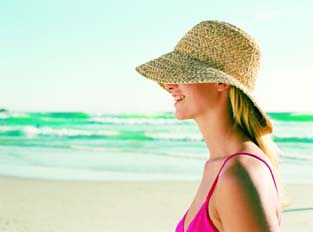Effects of the climate and pollution
The climate and environmental aggressors, especially pollution, can take their toll on your skin and hair. Extreme changes in temperature cause reactions and force your skin to adapt to the seasonal changes.
POLLUTION
Pollution is all around us –cigarette smoke, car exhaust fumes, smog– increasing the damage caused by free radicals produced by the body. This can cause damage to the skin cells, causing deterioration of the skin's support structures, decreasing collagen and resilience. Free radical damage accelerates the process of aging. Air pollutants can interfere with the skin's ability to regulate moisture levels; the skin may become dry and scaly or the pores may close, causing pimples and black heads.

HOW TO PROTECT YOURSELF
- • Antioxidants (particularly vitamins A, C and E) help to block damage caused by free radicals. This is why it's important to eat a diet rich in antioxidants, especially fruits and vegetables.
- • Thoroughly cleaning the skin at night can help to remove pollutants absorbed by the skin during the day.
THE COLD
With cold temperatures your skin becomes more sensitive and fragile. Cold air and winter wind can make blood circulation slow down. As a result the skin's metabolism becomes lazy, and the cells get less oxygen. This is why during cold and windy weather the skin tends to dry up, flake and develop a rough texture. Going from one extreme temperature to another (from the cold outdoors to a heated house for example) aggravates skin problems, sometimes causing the red spots or broken capillaries that tend to show up on the face in winter weather.
HOW TO PROTECT YOUR SKIN
- • Lower the heater in your home as low as possible. U se extra clothes to bundle up if necessary.
- • Try to keep rooms humid with a humidifier or placing a bowl filled with water near the radiator.
- • Don't use an electric blanket, because they keep your body temperature too high in the night.
- • Leave a window in your bedroom open at night so that fresh air flows.
- • Use a high quality moisturizing cream, especially when you go outdoors.
HEALTHY HAIR'S ENEMY
The principal enemy for hair is not the cold. External factors that damage the hair are the sun and heat. In high temperatures, hair tends to dehydrate; an increase in sweating makes the hair lose its oily coating that protects and makes the hair shine. Chlorine is also a destructive agent that slows down hair growth and discolors the hair. Salt water tends to dry the hair out. Ultraviolet rays change the hair cuticles (the covering that protects the hair) and makes the hair's surface susceptible to damage. Split ends, dry, fragile, dull, frizzy hair and loss of volume are the most common signs of damage during the summer.


Comment about this article, ask questions, or add new information about this topic: